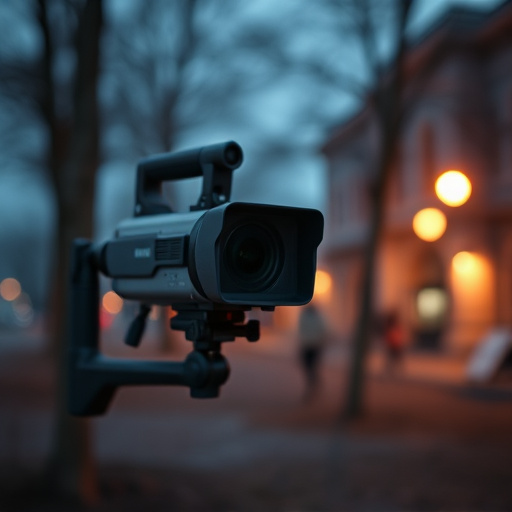Wireless hidden cameras in apartments face challenges from glints and reflections, compromising privacy. Advanced techniques like infrared imaging, thermal cameras, and EMF detectors help detect these intrusive signals under low light. Strategic approaches such as smart lens coatings, precise angle adjustments, and specialized technology ensure clearer footage and enhanced security for apartment surveillance systems.
In today’s digital age, the rise of wireless hidden cameras poses a significant concern for privacy in residential spaces like apartments. Understanding glint detection in nighttime photography becomes crucial for identifying these covert devices. This article delves into effective techniques to uncover wireless hidden cameras using glint analysis, offering practical strategies to combat this modern threat to personal safety and security, especially within urban dwellings.
- Understanding Glint Detection in Nighttime Photography
- Techniques for Wireless Hidden Camera Identification
- Effective Strategies to Combat Glint and Ensure Safety
Understanding Glint Detection in Nighttime Photography
Glint detection is a crucial technique in nighttime photography, especially when dealing with wireless hidden cameras for apartments or any closed-space surveillance setup. The essence of this method lies in identifying and minimizing reflections caused by artificial light sources, such as streetlamps or indoor lighting, which can distort images and compromise privacy. By employing specialized algorithms and sensors, the system detects these unwanted glints, allowing for clearer, more secure footage.
In low-light conditions, glint detection becomes even more critical as it helps to differentiate between genuine objects in the frame and intrusive reflections. This is particularly relevant for apartment complexes or buildings where interior lighting might cast shadows and create false positives in traditional surveillance systems. With advanced glint detection, wireless hidden cameras can provide sharper, more reliable images, ensuring that residents’ privacy remains intact even under nighttime conditions.
Techniques for Wireless Hidden Camera Identification
Detecting wireless hidden cameras in apartments has become a crucial concern for homeowners and tenants alike. One effective method involves utilizing specialized equipment to identify the unique glint or reflection these cameras emit, especially under low-light conditions. This process is often aided by advanced image processing algorithms that can analyze and detect subtle variations in lighting patterns.
Techniques such as infrared imaging, thermal cameras, and high-sensitivity visual sensors are employed to locate wireless hidden cameras. Infrared technology, for instance, can penetrate darkness and reveal heat signatures, potentially indicating the presence of a camera lens. Similarly, thermal cameras visualize temperature differences, helping to identify devices that generate heat, like active camera modules. Additionally, manual searches using handheld detectors or smartphone apps designed to detect EMF (electromagnetic field) emissions from hidden cameras are also popular among those seeking to ensure privacy in their homes.
Effective Strategies to Combat Glint and Ensure Safety
To effectively combat glint and ensure safety in surveillance with wireless hidden cameras for apartments, several strategic approaches can be employed. First, utilizing infrared or low-light technology can significantly reduce the occurrence of glint by enhancing visibility in dimly lit environments. These advanced sensors capture detailed images and videos even under minimal light conditions, minimizing reflective artifacts.
Additionally, implementing smart lens coatings and angle adjustments can further mitigate glint issues. Many modern wireless hidden cameras come equipped with adjustable lenses that allow users to precisely control the camera’s field of view and reduce direct light exposure. This combination of technological advancements ensures that footage remains clear and unobstructed, providing a secure and reliable monitoring solution for apartments.
In the realm of nighttime photography, understanding glint detection methods is crucial for both capturing stunning images and ensuring safety in spaces like apartments. By employing wireless hidden camera identification techniques, residents and professionals can proactively combat the use of these devices, fostering a more secure environment. Through effective strategies tailored to address glint and its various manifestations, it’s possible to enhance privacy and peace of mind, making our living spaces truly ours once again. When it comes to protecting apartments from Wireless Hidden Cameras, knowledge and proactive measures are our best allies.
